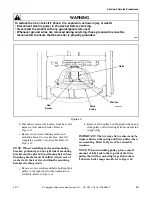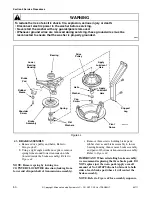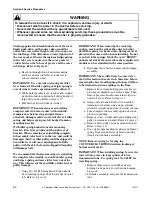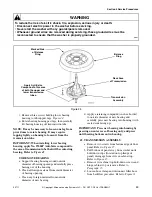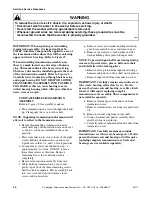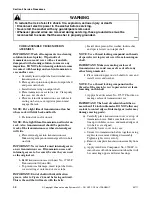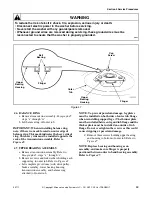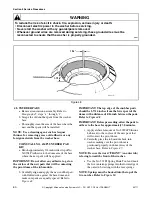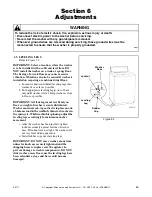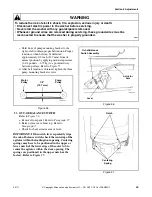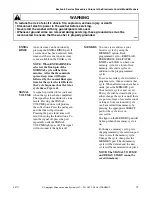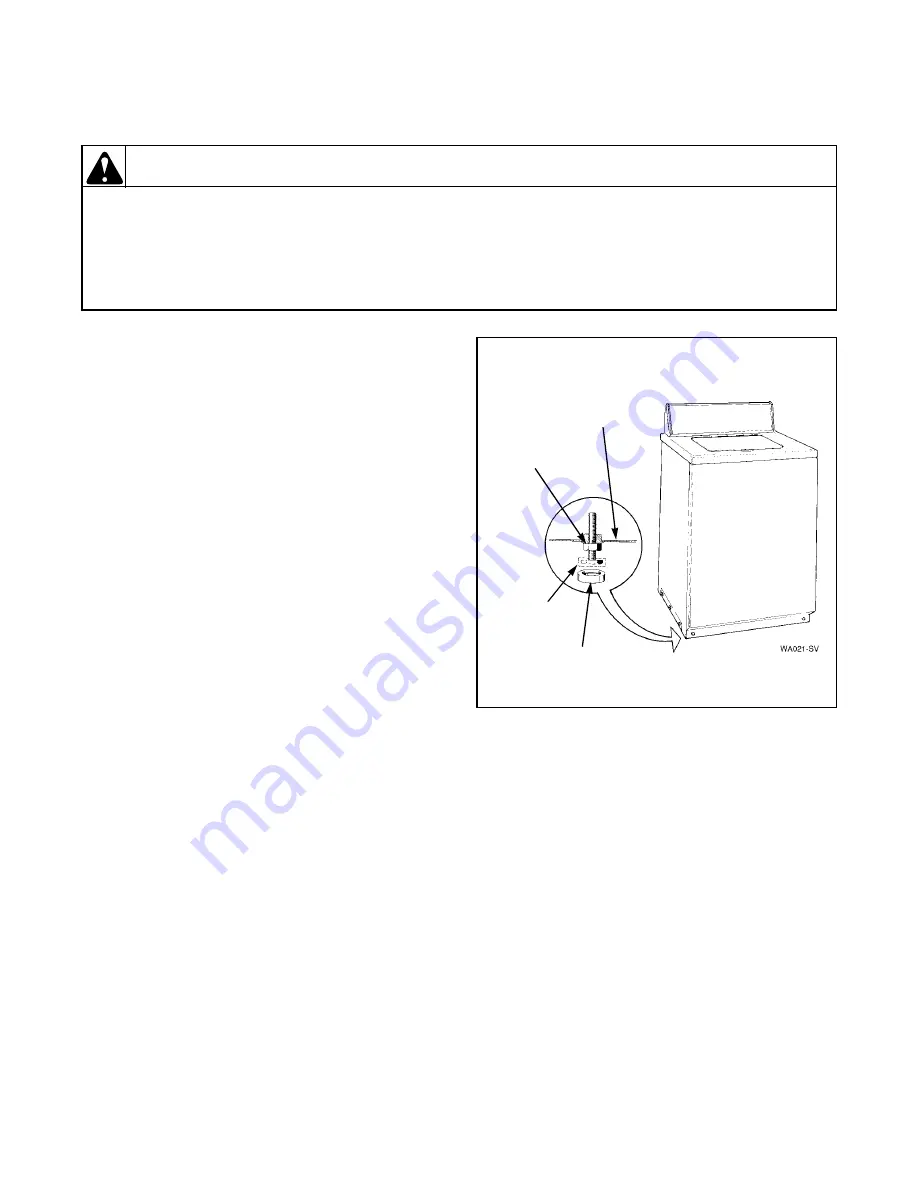
33711
63
To reduce the risk of electric shock, fire, explosion, serious injury or death:
• Disconnect electric power to the washer before servicing.
• Never start the washer with any guards/panels removed.
• Whenever ground wires are removed during servicing, these ground wires must be
reconnected to ensure that the washer is properly grounded.
W003
WARNING
© Copyright, Alliance Laundry Systems LLC – DO NOT COPY or TRANSMIT
Section 6
Adjustments
49. LEVELING LEGS
Refer to Figure 52.
IMPORTANT: Select a location, where the washer
is to be installed, with a solid and level floor. DO
NOT install the washer on a weak or spongy floor.
The flexing of a weak floor may cause excessive
vibration. Vibration can also be caused if washer is
installed on carpeting or cushioned vinyl floor.
a. Loosen locknuts and thread leveling legs into
washer base as far as possible.
b. Turn appropriate leveling leg(s) out of base
only until washer is level. Keep washer as close
to floor as possible.
IMPORTANT: All four legs must rest firmly on
floor so weight of washer is evenly distributed.
Washer must not rock. A good test is to place an out-
of-balance load in the washtub, then start washer in
the spin cycle. While washtub is spinning, adjust the
leveling legs accordingly for minimum washer
movement.
c. After the washer has been leveled, tighten
locknuts securely against bottom of washer
base. If locknuts are not tight, the washer will
not stay level during operation.
d. Install rubber cups over leveling legs.
IMPORTANT: DO NOT move washer at any time
unless locknuts are securely tightened and the
shipping brace is in place over the agitator (to
prevent damage to washer components). DO NOT
slide washer across floor once the leveling legs have
been extended, as legs and base could become
damaged.
Figure 52
Washer
Base
Rubber
Cup
Leveling
Leg
Locknut

